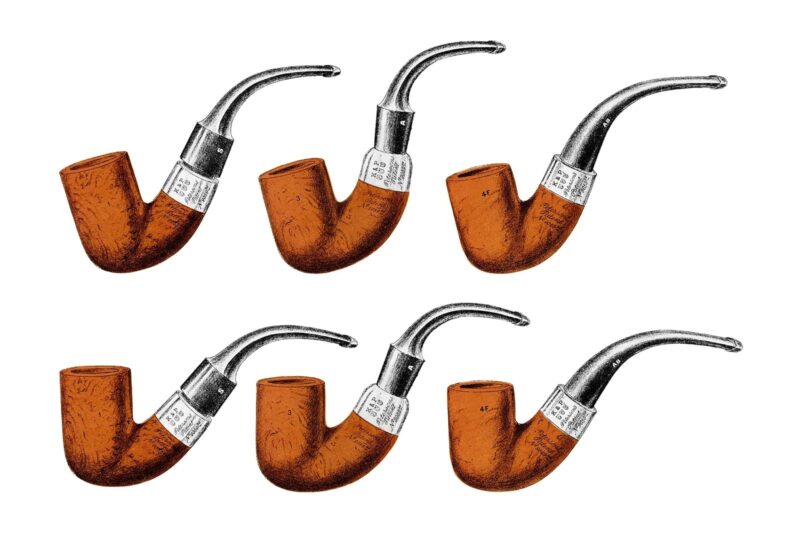Pipe smoking is not only about tobacco. The shape, length, depth, and geometry of the pipe itself transform how the smoke tastes and feels. Materials matter, but the shape sets the tone.
Every part of a pipe affects the experience. That becomes clear when different pipe shapes explained in real use show major differences in smoothness, flavor delivery, and coolness of smoke. Each design choice adds or subtracts from the ritual, the draw, the aroma, and the control.
A Journey Through Geometry: What Shapes Really Do
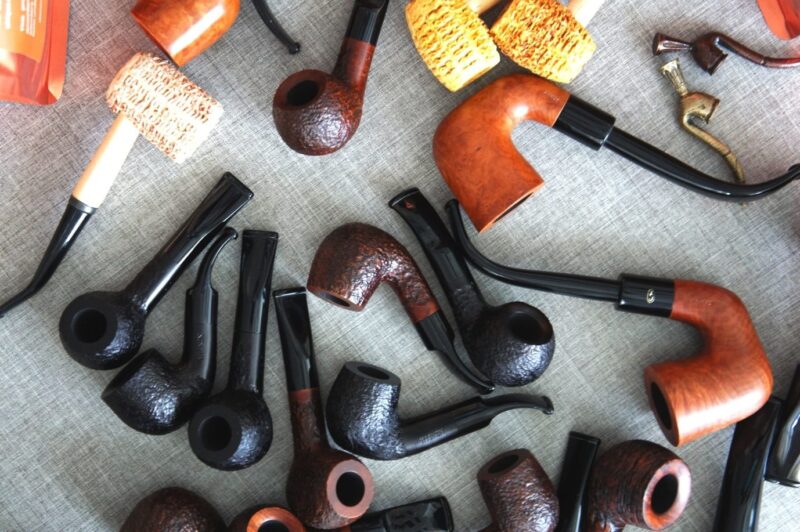
Design is not decoration. Bowl shape determines burn speed. Stem length manages temperature. Chamber depth controls session length and smoke density. A change in one detail forces the smoker to adjust everything else.
Long pipes like Churchwardens extend the smoke path. Cooler draw, smoother taste, and slower cadence emerge naturally. Short pipes like Nosewarmers create a punchier, warmer hit. Stronger blends often benefit from longer stems. Virginias and Periques reveal more complexity in cooler smoke.
Bent stems pull weight back toward the smoker’s jaw. Comfort improves. The bowl hangs more naturally. The shape invites hands-free use. Straight stems deliver a direct smoke path, adding intensity but requiring better packing technique.
Bowl Width and Depth: Flavor Control Starts Here
Wider bowls, like those on Author or Pot shapes, spread out the ember. That wider combustion zone helps complex blends open up. More tobacco burns at once, allowing a richer aroma cloud and fuller mouthfeel. It also demands careful pacing. Puff too quickly and heat will spike.
Narrow bowls, often seen in Stack or Chimney shapes, focus the ember. These pipes favor delicate leaf like Virginia or Burley. Flavors become clearer, less muddied. A narrow chamber limits airflow and cools the draw.
Deep bowls add session time. Longer smokes develop more stages. Each relight triggers new transitions in flavor. Shallow bowls deliver intensity in a compact format. Short breaks or fast smokes call for that structure.
Shape by Shape: A Closer Look at the Icons
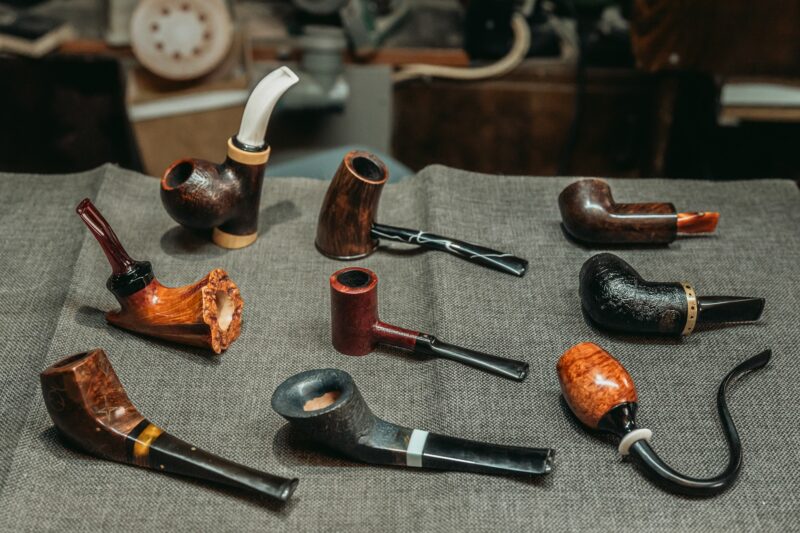
Every pipe shape tells its own story. Behind each curve lies a reason. History, technique, and user comfort all shape why certain bowls and stems remain favorites among seasoned smokers and curious beginners.
A specific shape does more than affect appearance. It defines how smoke flows, how flavor develops, and how the pipe feels during use. The structure becomes part of the ritual, not separate from it.
Shape also changes behavior. A smoker may reach for a certain design when seeking a shorter session, a deeper aroma, or a cooler draw. Familiarity grows over time, but each form continues to deliver new discoveries. What begins as preference often becomes loyalty. And that loyalty starts with understanding what each shape brings.
Billiard
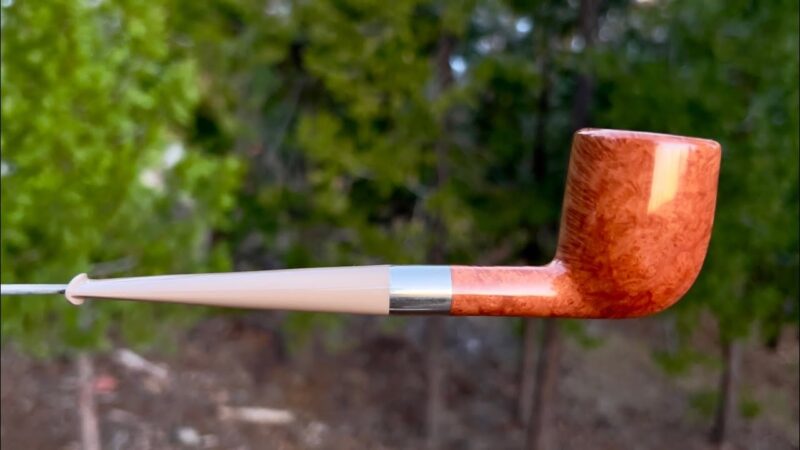
Most common and most balanced. The Billiard features a cylindrical bowl and a straight or slightly bent shank. Its even geometry allows beginners and purists alike to gauge flavor and draw without interference. Control sits front and center.
Dublin
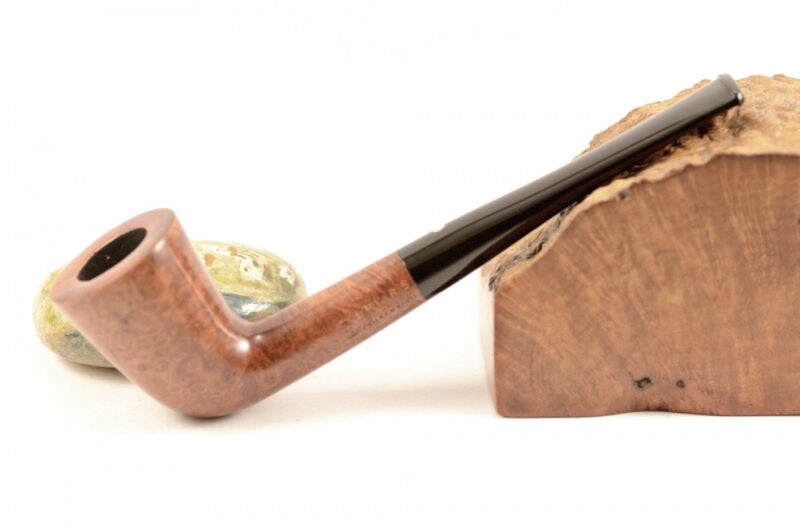
Conical bowls give Dublin pipes a signature look. The wider rim leads down to a tapered base. Concentration increases toward the end of the smoke. Flavors intensify. Heat rises gradually. The draw becomes narrower with each puff.
Bulldog
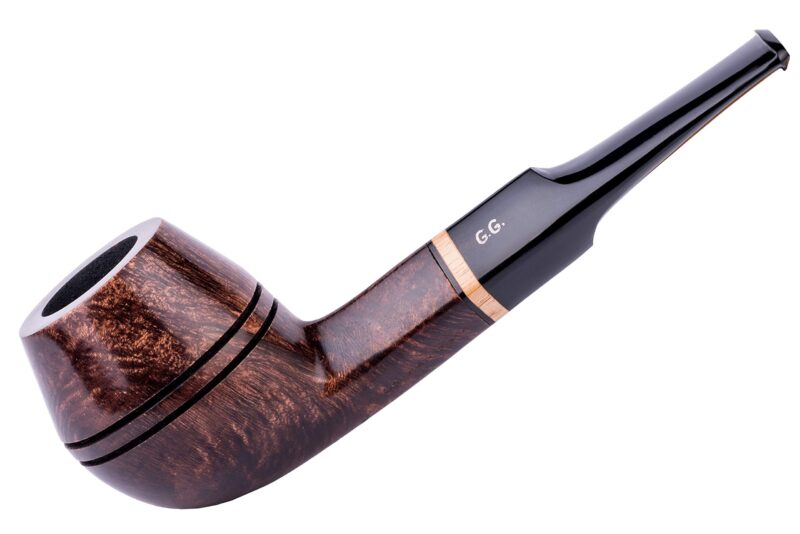
Flat-bottomed and diamond-shanked, the Bulldog looks aggressive. Functionally, it remains stable when set down. Comfort comes from its unique grip contour. The bowl’s shape encourages slow burning and dry sessions. Aromatics shine here.
Apple
Round and full in the hand, Apple pipes bring smooth lines and a thick bowl wall. That thermal mass retains heat, balancing tobacco temperature. A cool, relaxed draw defines the session. Apple encourages longer, meditative smokes.
Churchwarden
With a stem that often stretches past nine inches, the Churchwarden invites calm. Smoke cools significantly. The bowl stays far from the face. Distractions fade. Reading, evening strolls, and quiet reflection align with this design.
Cutty
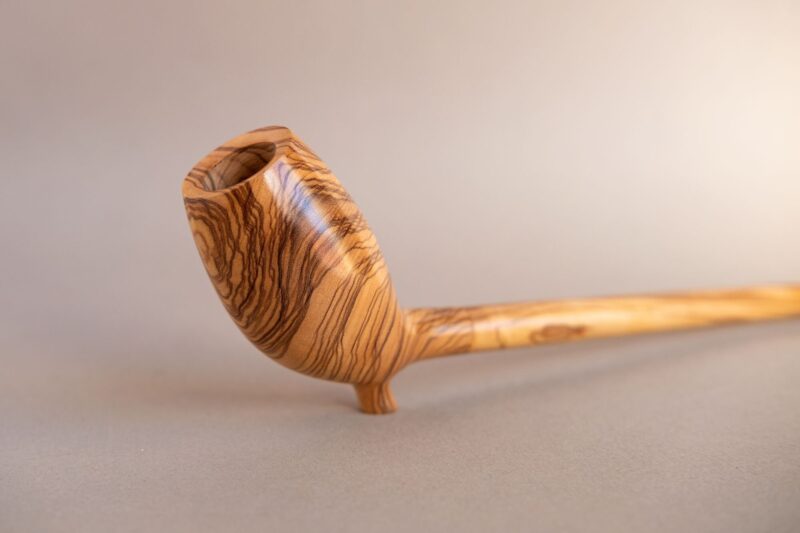
Vintage in form, the Cutty carries an angled bowl and a slight forward lean. This shape harks back to clay pipes. That lean makes lighting easier. It also delivers a consistent ember surface, which preserves blend balance.
Poker
A true sitter. The flat base of the Poker lets the pipe rest upright on any table. No need for a stand. Short, bold bowls with solid airflow deliver compact flavor in a reliable, steady burn.
Zulu (or Yachtsman)
Elegant in silhouette, the Zulu features a forward-canted bowl and a curved stem. A lighter draw complements brighter tobaccos. This pipe delivers finesse in both form and function.
Materials Matter Too, But Shape Takes Lead
Briar dominates pipe making for good reason. It resists heat, absorbs moisture, and survives long-term use. Grain patterns add beauty, but performance always starts with structure.
Meerschaum offers neutrality. Every flavor comes directly from the tobacco. These pipes require no break-in. The material remains porous, drying the smoke naturally.
Corncob pipes perform above their cost. Affordable and surprisingly smooth, they offer excellent trial runs for new shapes or blends. Expect a neutral flavor and fast cooling.
Metal pipes like the Falcon use interchangeable bowls and aluminum stems. Smoke cools quickly. Cleaning is simple. Structure, however, stays rigid. Flavor nuances tend to flatten.
Clay pipes recall history. Pure flavor comes through with no interference. Heat builds fast, demanding a slow draw. Many historical reenactors favor this material for its authenticity.
Practical Concerns and Functional Impacts
Shape impacts cleaning. Bent stems often trap more moisture. Straight pipes simplify maintenance. Short pipes condense tar and ash quickly. Long stems help stretch the smoke but may clog faster with improper care.
Grip also varies by form. Round bowls feel softer. Diamond shanks add edge. The weight balance affects jaw tension and arm strain. Certain pipes sit better in the mouth. Others beg for a resting hand.
Capacity changes across shapes. Deeper chambers favor Latakia-rich English blends. Shallow bowls suit straight Virginias. Each pipe fits a different ritual. Morning smokes may call for a quick Stack. Evenings might demand a relaxed Billiard.
Flavor, Draw, and Combustion by Design
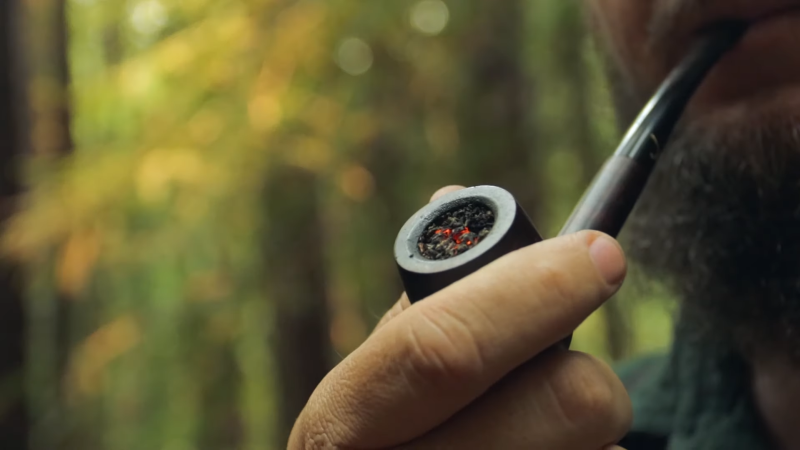
Draw tension shifts with bore width and shape. Narrower bores increase resistance. Open bores allow faster puffing but require skill to avoid overheating. A good draw should feel effortless yet controlled.
Burn consistency connects to chamber shape. Cylindrical chambers allow even layers of ash and ember. Conical bowls change density through the smoke. That variance creates flavor waves, which many smokers enjoy.
Temperature ties to geometry. Heat travels directly through straight stems. Bent pipes slow that path. That delay reduces tongue bite and sharpness. Cooling improves texture and body.
Choosing Pipes for Specific Blends
English blends, loaded with Latakia and orientals, flourish in wide chambers. The complexity needs room. Airflow must remain unrestricted. Pipes like Pot, Author, or large Billiards meet that demand.
Virginia blends benefit from narrow bowls. These tobaccos burn hot. Narrow stacks control heat and concentrate flavor. Slow sipping reveals layered sweetness.
Aromatics require balance. Moist blends like cherry or vanilla favor medium bowls with thicker walls. Apple or Dublin shapes help maintain an even draw and dry smoke.
Burley-based blends pair well with varied shapes. Their moderate burn rate allows flexibility. Bulldogs, Pokers, and Cuttys suit them well.
Session Types and Matching Shapes

Short smokes call for compact bowls. Stacks and Nosewarmers handle 10 to 20 minutes. Quick breaks, morning walks, or transitions between meetings all suit this type.
Long smokes demand deep bowls and cool delivery. Churchwardens or large Dublins deliver two-hour sessions with ease. Reflective moments or end-of-day rituals work best here.
Outdoor use requires durable, portable designs. Corncob pipes, Pokers, or thick-walled Bulldogs travel well. Wind caps help retain ember. Cleaning tools must be simple.
Indoor or leisure sessions allow creative pipe selection. A hand-carved briar with a wide bowl may become a centerpiece. Comfort and control become priority.
Craftsmanship and Collector Value
Pipe shape also affects aesthetic appeal. Collectors often seek rare interpretations. Asymmetrical cuts, hybrid shapes, or innovative designs elevate value. Some artisans create one-of-a-kind bowls that redefine function and fashion.
Brand legacy ties into shape as well. Peterson’s System pipes famously integrate a moisture trap into a bent design. Savinelli uses balsa filters to balance draw and dryness. Both brands offer signature silhouettes that influence smoker choice.
Handmade pipes bring personality. Machine-made pieces offer consistency. Each has a place in rotation. Selecting a shape becomes a personal journey. Purpose guides the process.
Lifestyle Connection and Ritual Significance
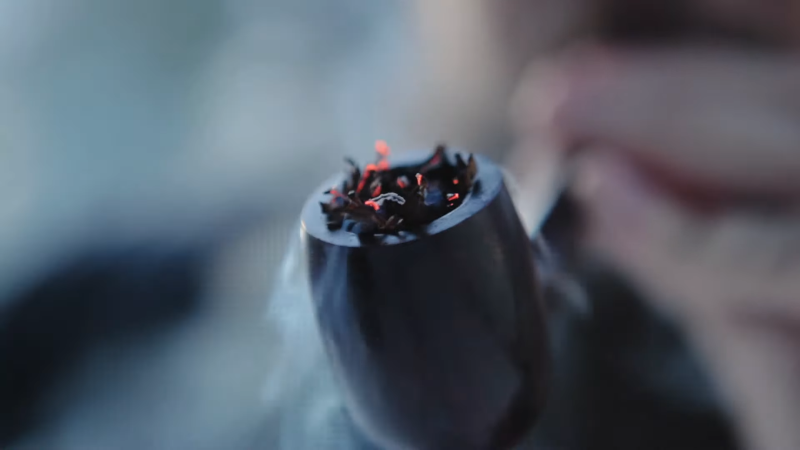
Pipe smoking forms part of a broader lifestyle for many. Shape selection becomes ritualistic. Preferences reveal personality. The shape of the pipe reflects how the user wants to feel.
Slow sessions in solitude pair well with long, elegant Churchwardens. Social settings favor compact Pokers or Apples. Walking outdoors might require a bent Billiard clenched comfortably between the teeth.
Shape matches rhythm. A fast-paced life may need brief Stack sessions. Meditative reflection asks for a deep-walled Dublin. Discovery unfolds through experimentation.
Storage, Rotation, and Longevity
Shape impacts how a pipe rests. Sitters like Pokers and Bulldogs need no stand. Curved stems rest better in pipe racks. Wide-bowled pipes take up more space. A varied rotation demands thoughtful storage.
Smoking one pipe too often causes burnout. Rotation maintains pipe health. Having different shapes encourages proper spacing. Each pipe cools and rests fully between uses.
Longevity improves with care. Clean stems, cleared draft holes, and reamed bowls keep draw optimal. Pipes with unique shapes may require custom tools. Investment in care preserves flavor and structure.
Final Thoughts
No detail in a pipe is accidental. Every curve, taper, and angle changes how the smoke feels. Shape shapes the experience.
Control, comfort, flavor, and heat all connect to geometry. Tobacco choice meets its match in pipe form. Lifestyle finds reflection in silhouette and stem.
Personal connection begins with trial. Each smoker builds a collection based on taste, pace, and purpose. Every new shape adds dimension. Insight follows each session.
Shape decides more than look. It controls every puff.

